
Utah Smart Home Automation
Through smart home automation, Reed's Built-Ins connects all the systems in your home together into one easy-to-use interface that operates with the same menu structure across all the systems. Serving Utah for over 45 years!
Get a Pricing QuoteSIMPLE · SMART · INTEGRATED HOME AUTOMATION SYSTEMS
With today’s homes becoming more electronic and high-tech, running each “Sub-System" becomes more difficult and complex. Wouldn’t it be nice if all of these systems could come to together into one easy-to-use interface that operated with the same menu structure across all the systems? This would eliminate the need to learn a new menu for each device and reduce the clutter on the wall. A Home Automation system from Reed’s Built-Ins using structured wiring makes this dream a reality. We're a local company located here in Utah.
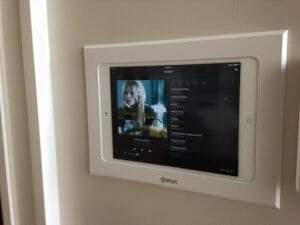
Enlarge Photo
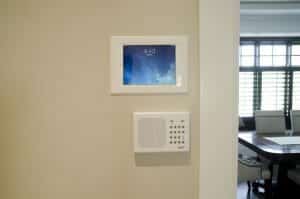
Enlarge Photo
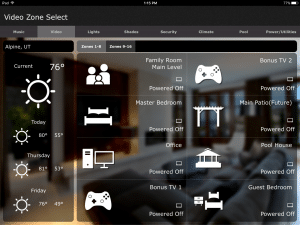
Enlarge Photo
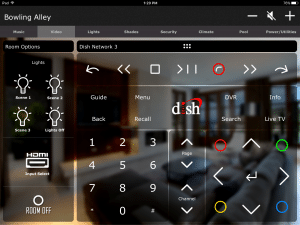
Enlarge Photo
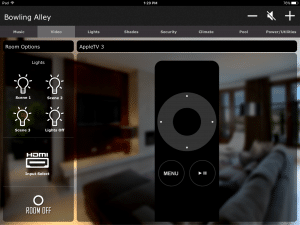
Enlarge Photo
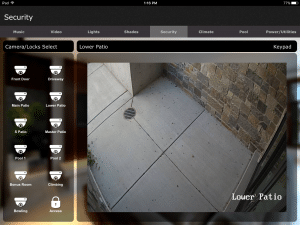
Enlarge Photo
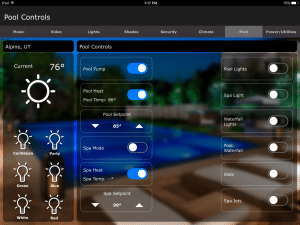
Enlarge Photo
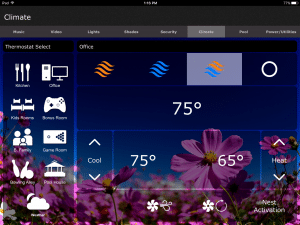
Enlarge Photo Click A thumbnail to enlarge
How Utah Home Automation Works
Our first step is to determine which systems need to be controlled. Some examples of what can be controlled with smart home technology can include, but are not limited to: Heating/Cooling, Lighting Control, Pool/Spa, Irrigation, Whole House Music/Video, Gate/Access Control, and Security. Once you have selected what you want to control, we connect all of these systems to a central control processor. This acts as the brain of the system. From there, we design the system around the Graphical User Interface, or GUI, which is the most important component. This is the interface that you, the homeowner, will interact with on a regular basis. This can include in-wall touch panels, handheld remotes, laptops, computers, or even mobile devices such iPhones that allow you to check on things while you’re away. No matter what combination of hardware devices you use, they all share the same intuitive GUI to make it easy to navigate and control.
The Difference Is In the Programming
Many electronics installations firms can enable communication between components within a system. However, the best systems incorporate an intuitive, easy-to-use control interface that anyone can operate. One of our principle philosophies of design is that “If it’s not easy, it won’t get used.” By finding out from the customer what we can do to make life easier, we can add simple things to make daily activities a breeze. For example, a “Goodnight” button that, with a single press, gives you plenty of lighting control and turns off all the lights in the house, turns on the hall light at 30% for a nightlight, makes sure the home theater was turned off, powers off all the music in the house, sets the heating back a degree or two for the night, and arms the security system. While it sounds complicated, to you it’s still just one press of a button.
Control Everything With Your Phone
Imagine the convenience of being able to control every home system with an app on your phone. Not only does this save you time at home, but it also allows you to check and change any system while you’re gone for the day or the weekend. Do you need to turn on lights, lower the temperature inside the home, or change a security system setting while you’re away? It’s simple with our smart home app. Give yourself the power to control all home systems with one device you likely carry with you all day.
At Reeds Built-Ins, we know each house has different and unique sub-systems to control. We completely customize the control app for each home, so everything you need and nothing you don’t is on the app. Total control for every sub-system is just a tap or two away.
Smart Home Automation FAQs
What are some of the common uses of home automation?
You’ll find that there are many uses and applications for home automation. Some of the most basic and common uses of home control are HVAC, kitchen appliances, lighting control, sprinkler systems, and security systems. Other typical uses are gate/access control, remote garage control, window shades, pool/spa, smart televisions, and wireless audio systems. Some of the most significant advantages of home automation are the ability to:
- make your home safer
- streamline many of your home’s functions to operate at the touch of a button
- provide remote access to your home’s systems while you are away
- improve the 24/7 comfort of your home
Is there a difference between a smart home and home automation?
Smart home devices and home automation are often grouped together in the same category, but there is a big difference between the two terms. Installing smart home devices in your house means that there are IoT (Internet of Things) devices in your home that can be controlled through a phone, tablet, or computer through a wireless internet connection. Home automation connects smart home devices into a streamlined system, enabling them to work together more easily. In other words, home automation is the culmination of several smart home devices working together to function based on programming implemented by a home automation expert or homeowner.
Will installing an automation system increase home value?
Whole home automation system technology continues to increase in demand. Today, many homeowners want and expect to have elements of a smart home installed in their homes. When your house is automated with smart technology, it can increase the asking price and can be a selling point to potential homebuyers. The key to adding value is having the smart home system installed and working properly before listing your house.
In addition to increasing convenience for homeowners, smart home technology can also be cost-efficient. Home systems can help save money on utility bills by helping to conserve energy.
Can I do home automation by myself?
Yes, it’s possible to install home automation by yourself. However, DIY is not always the most straightforward process, especially if you are unfamiliar with smart technology or a novice DIY-er. There are many benefits to hiring Reed’s Built-Ins to set up your home automation system. When you hire us, our experts bring years of experience to your project, helping us get it done correctly in a fraction of the time. You’ll also have the comfort of knowing that you have the latest technology, high-end materials, and our tested and proven home automation apps. In addition, you’ll receive all of our tips, tricks, and explanations for maximizing your home automation system. Rest assured that when you hire us for home automation services, you’ll receive an incredible system that lasts for years (at an excellent price).
How can home automation help me save on energy bills?
Home automation can improve nearly element of your home’s utility process. When children forget to turn off a light, your smart home system sensors can turn off the light when the motion sensors signal that they’re no longer in use. Smart thermostats can be controlled and programmed easily, allowing you to set temperatures throughout the day to reduce wasteful energy expenditures. Smart shades can automatically help you regulate the sunlight coming into your home, giving you greater temperature control. Home automation also allows you to customize specific schedules for appliances, helping you save money and electricity or gas.





















